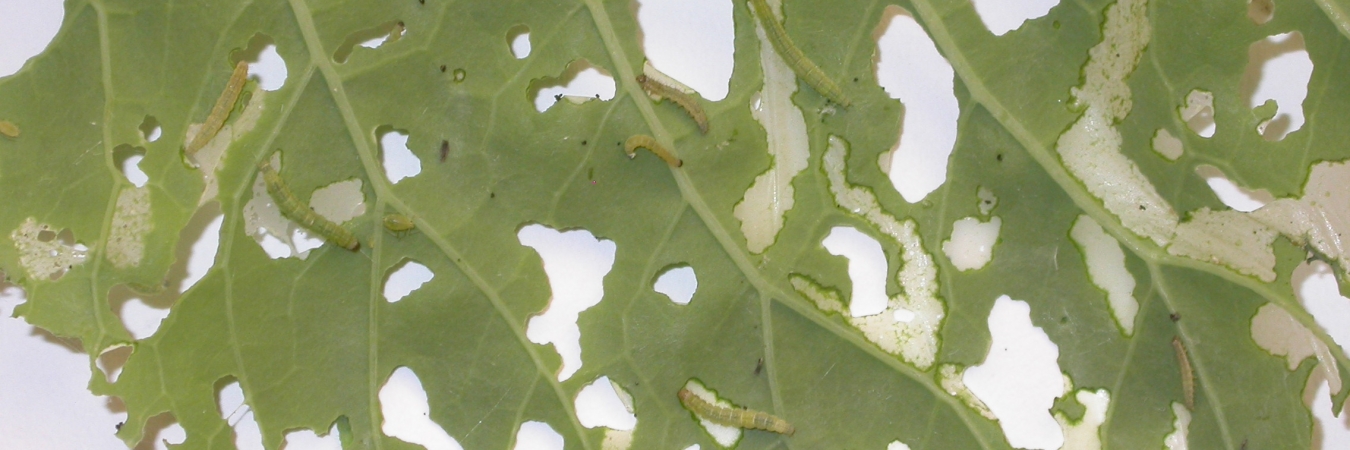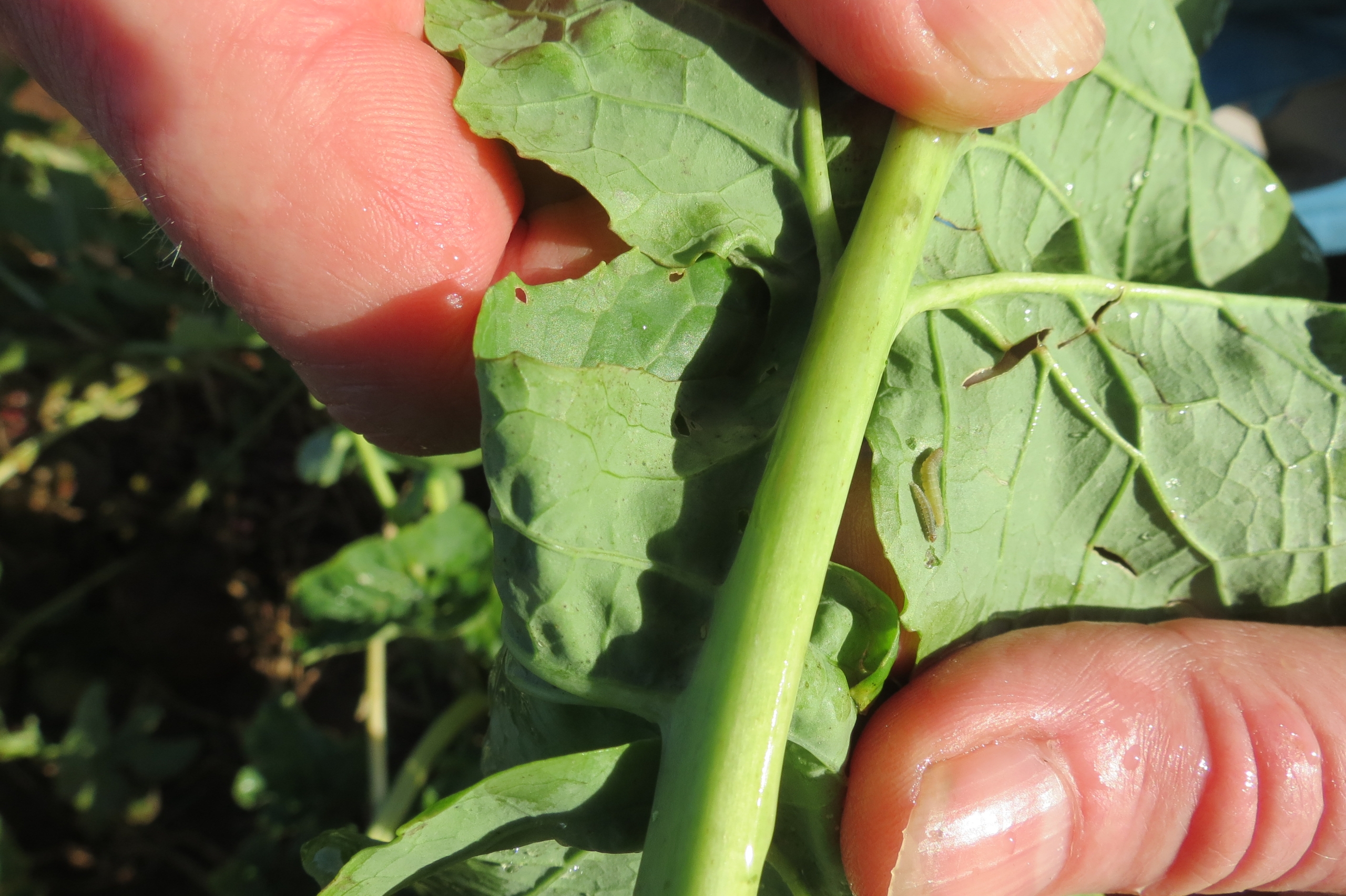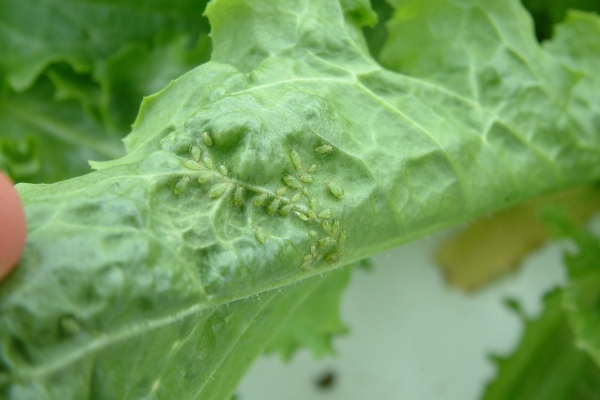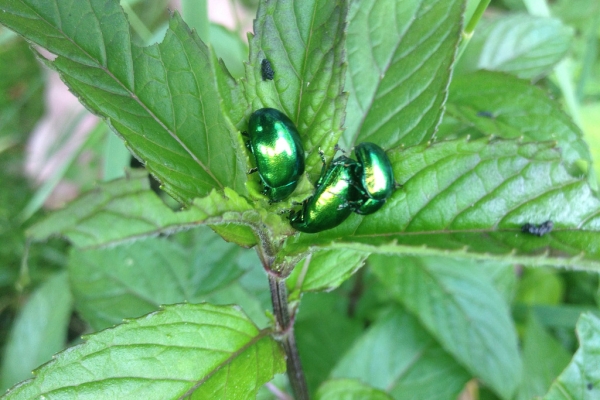Dealing with diamond-backs!
If you search for ‘diamondback’ in the social media then you will find posts about bicycles, guns, terrapins, snakes and several other weird and wonderful things. These will be interspersed with comments about the diamond-back moth, probably the most damaging and widespread pest of brassica crops. It’s quite a small brownish moth with a diamond pattern along its back – but its larvae (caterpillars) have a prodigious appetite for members of the cabbage family (see above!). The diamond-back moth (or DBM) is a significant pest in all continents apart from Antarctica and does particularly well in warm climates, where it is able to produce a new generation of moths in a very short time. There is also great genetic diversity within the global DBM population enabling it to adapt to new selection pressures and it’s well-known for rapidly becoming resistant to new insecticides including the Bacillus thuringiensis toxin (Bt). Because of all these factors, DBM is considered to be one of the most difficult pests to control.
Whilst we certainly don’t have the very high levels of infestation that plague growers in warmer climates, DBM can be a significant pest in the UK. The general understanding is that DBMs are unable to overwinter very successfully in temperate regions and that large outbreaks are attributable to migration. When they’re dispersing the moths probably fly at a height of a few hundred metres where the air temperature is most suitable for flight efficiency and they’re also able to ‘capitalise’ on any wind currents at this level, increasing the distance they can migrate. This has been studied in more detail by Jason Chapman and colleagues.
There have been a number of significant migrations of DBM into the UK in the last 50+ years and 2016 was just such a year. By chance we were already working on this pest (and the silver Y moth – another migrant pest) in an AHDB Project (FV 440). The moths arrived at the end of May and were soon causing damage to horticultural brassicas and also, in some cases, to oil seed rape. Many thousands of moths could be seen fluttering in brassica fields and people were also finding them in their houses and other ‘unlikely’ locations. Charlotte Wainwright, the meteorologist working on FV 440 demonstrated that the most likely source of the moths was Norway, even though large numbers had also built up in Belgium and the Netherlands. This was mainly due to the wind direction at the time. The resources on this AHDB web page give further information about what happened in 2016.
So what can UK growers ‘do’ about DBM? Firstly, in most areas it’s a sporadic pest since large migrations do not occur every year. I now have ‘first-hand’ evidence that DBM caterpillars can survive at least part of the winter in warmer parts of the UK following a visit with Dawn Teverson from the AHDB to the south west last January, but these are unlikely to impact on the country more widely. We are therefore trying to provide growers with an early warning of moth arrivals by monitoring citizen science websites in north western Europe and social media (Twitter) and posting a summary of people’s observations on a website on a daily basis (sponsored by AHDB). During 2018 some brassica growers monitored moth numbers in their crops using pheromone traps and this information was again posted on a website (sponsored by FMC, AHDB and the growers).
DBM captured in pheromone trap
There are obviously some insecticidal control options, although these can be limited by the resistance status of the immigrating moths. So far Steve Foster at Rothamsted Research has only detected resistance to pyrethroids in DBM collected in the UK. However, the range of insecticides with different modes of action is limited and this reduces growers’ ability to deploy an effective resistance management strategy (through rotation of applications of insecticides with different modes of action).
In terms of non-insecticidal methods of control then options are again quite limited – and this applies on a global scale. Products containing the Bt toxin can be effective as long as the local DBM population has no resistance to Bt. There may also be some new relatively effective biopesticides available in the future in the UK. The AHDB SCEPTRE/SCEPTREplus projects and project FV 440 have explored various options.
Crop covers might be an alternative method of control by excluding moths from susceptible crops. However, the use of crop covers on swede crops to exclude cabbage root fly, used widely in commercial production and usually very successful, has demonstrated that the covers afford no protection against diamond-back moth and indeed can exacerbate the problem. It seems likely that the moths lay their eggs on and possibly through the netting, making it easy for the newly-hatched caterpillars to move onto the crop. The next generation is able to reproduce under the net – where it is very cosy! It’s likely that only a very small mesh size would exclude DBM and this is likely to have other consequences for the crop.
DBM larvae in swede crop in Somerset in January 2018
As the diamond-back moth is such a significant pest globally then much research effort has been devoted to alternative methods of control. This includes host plant resistance (an aspect being explored by our group at the University of Warwick in the VeGIN project and more widely by other research organisations and seed companies). There is also the option to grow brassica plants which have been genetically modified to express the Bt toxin and this has been deployed in certain parts of the world where such crops are acceptable. This again relies on the local moth population being susceptible to Bt and a resistance management strategy would be important.
Various novel approaches have been explored, such as using trap crops to ‘lure’ the moths away from susceptible cash crops. My understanding is that these approaches are not used widely since such systems can be complicated to set up and are not always reliable. In the UK it may also be a ‘waste of productive land’ in the years when DBM do not arrive. There are also opportunities to use pheromones to manage moth populations, for example, with the mating disruption technique that is used quite widely for managing codling moth in apple orchards. Again I don’t believe that this approach is used widely to manage DBM. Finally, there is the opportunity to rear and release sterile moths which then mate with the wild population, reducing the overall fertility rate. Insects (usually males) can be sterilised using chemicals, irradiation or, more recently, genetic modification. The UK company Oxitec has been pioneering such approaches and management using ‘self-limiting diamondback moths’ is now being tested in the USA by Tony Shelton and his group. As with the Bt GM crops there is obviously the question of how acceptable such an approach would be in different parts of the world.
As with all pest insects DBM has a number of natural enemies and is also susceptible to viral, fungal and bacterial diseases. Some potential pathogens have been developed into biopesticide products, although Bt is the only effective product available in the UK at present. We and at least one grower have noticed that populations of DBM can often be quite heavily affected by parasitoid wasps (see below).
These are free-living wasps that inject their eggs into DBM caterpillars and their larvae consume the caterpillars over time – from the inside! Rather than a moth emerging from the DBM pupa – a new adult wasp appears. We’ve found that more than half of the caterpillar offspring of the immigrating moths may be parasitized. This is obviously ‘too late’ to reduce early damage, as the caterpillars continue to feed whilst they’re being consumed, but it does reduce the size of the subsequent generation. It would be useful to learn some more about the biology of these parasitoids to work out how their numbers could be increased.
So whilst there appear to be a number of interesting ‘options’, UK growers are still very limited in what they can do at present. DBM is going to keep entomologists like me in a job for a few more years and, since it is such a successful and adaptable species, there may never be a ‘final’ solution. This is where Integrated Pest Management comes in – using a range of ‘tools’ in an integrated strategy to ‘chip away’ at a very challenging pest and at the same time avoid significant levels of resistance developing!
Rosemary Collier writes of herself:
“I’m an applied entomologist who focuses on the pests of vegetable crops. My role at the University of Warwick means I can combine three of my main interests – animals, horticulture and food! I always wanted to work in this area and ‘got there’ by doing degrees in Zoology and Applied Entomology and then a PhD on pest caterpillars (cutworms). I’m an Associate Professor in the School of Life Sciences and a member of Warwick Crop Centre, I undertake research, teach undergraduate and masters students and coordinate Warwick University activity on food – the Food GRP. I’ve always tried to do something that is ‘useful’ and to help farmers and growers to implement IPM. I think that I’ve at least partly achieved this through my work on vegetable pests, such as the forecasting systems for various pests, the AHDB Pest Bulletin and AHDB Pest Blog. I can see that for various reasons there will need to be a step change in the way that growers protect their crops from pests and diseases in the future and I see this as a very exciting – but huge – challenge. I’m a keen gardener (mainly flowers) and a strong supporter of the RHS. I was absolutely delighted to be awarded the RHS Veitch Memorial Medal earlier this year.”
As an addendum – migrant diamond-back moths were captured in light traps in several locations during the last week of December – together with silver Y moths. See the @MigrantMothUK Twitter account for an overview. They are unlikely to threaten crops at this time of year…
Header image shows cauliflower leaf damaged by diamond-back moth larvae. All images copyright Rosemary Collier, University of Warwick, with the exception of the wasp (copyright Victoria Norman)








